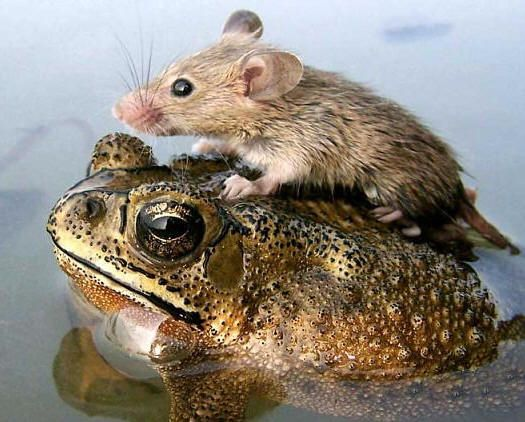
Fred sat in his office contemplating the line from the movie, Jerry Maguire, “Help me help you.” Fantastic line but far from reality. It seemed he was always trying to crowbar some form of cooperation from staff. Fred was sure he was not alone in his desire to see people working together rather than at odds with each other. He knew that ‘Cooperation’ was the shortest distance to achieve organisational goals but eliciting meaningful long-term cooperation seemed to be a mystery.
 It is interesting to note that the use of the word “cooperation” has increased dramatically since the times of the industrial revolution. It is as if the Industrial Revolution cued the ‘Need to Ask’ people to work together for a common purpose aka cooperate. Businesses became aware that success demanded cooperation and as the demands of business increased, cooperation became essential. Bizarrely prior to this cooperation was an assumed part of life.
It is interesting to note that the use of the word “cooperation” has increased dramatically since the times of the industrial revolution. It is as if the Industrial Revolution cued the ‘Need to Ask’ people to work together for a common purpose aka cooperate. Businesses became aware that success demanded cooperation and as the demands of business increased, cooperation became essential. Bizarrely prior to this cooperation was an assumed part of life.
Cooperation emerged as a primary task of leadership that focuses on getting people to work together in a systematic way. Having skilled players on a sports team does not guarantee success. The coach needs to find the magic that gets the team performing. Harnessing talents and actions of various players to produce a result that only working together can achieve. Even the best CEO’s stumble in their attempts to encourage cooperation when they do not understand the secret ingredients. Those foundational secret ingredients that cannot be observed but essential to success.
Unpacking the Secret Ingredients to Cooperation
Why did the request for cooperation increase after the industrial revolution?
The urbanisation of society, establishment or large manufacturing hubs altered the way people related. The gravitation towards organisational outcomes eroded peoples sense of community and disconnected them from the outcomes that they collectively cared about. People feel like they became cogs in the wheels of production. Disconnected from each other and the collective outcomes.
Prior to the industrial revolution ‘cooperation’ was a natural part of the fabric of society. For a community to survive it needed to cooperate. If you wanted to eat, you need to cooperate by helping with the harvest. For a family business to survive each member of the family needed to work together. Communities mimicked much of what nature revealed. Survival, in nature, is as much about working with your neighbours as it is about growing and reproducing.
Whether it is …
- Giant 40 tonne whales teaming up to feed. As one whale blows a ring of bubbles that acts as a curtain to corral the herring. Then each whale takes a giant mouthful of fish and water. Or
- The cleaner fish who fulfil the role of janitor and a medic removing parasites from larger fish, who are often predators. These special “cleaning stations”, trade food, the parasites the cleaner fish likes to eat, for a body scrub which is essential to the health of the larger predatory fish. The smaller cleaner fish gets granted a diplomatic immunity from otherwise hungry hunters.
3 Secrets to Cooperation
1. Community Comes First
Cooperation requires a sense of community. It is no mistake that top sports teams prioritise building a great culture. The sense of team and comradery that exists between players is often described as the X-factor to winning. Working on the community is the foundational element of cooperation. It may seem counter-culture to focus on building a sense community when ‘work needs to get done’. However, cooperation without a sense of community does not work
- Without community, people focus on self-interest
- Without community, there is no interdependence
- Without community, there is no collective outcome
2. Collective Outcome Second
To cooperate, people need to see the ‘big picture’ and cooperation can only function when the goal is commonly held. That does not mean that the goal is something people are aware of, is written on a banner or displayed in a foyer. Rather, it is a goal people ‘want’ and feel ‘connected’ to. Leadership constantly draws attention to the goal, heightening the desire to achieve the outcome.
3. Symbiosis Third
Symbiosis is the moment where everyone benefits. In nature, it is a natural phenomenon where both organisms benefit from the relationship. When the honey bee lands on a flower, it reflects a vital symbiotic partnership. A partnership where both the Bee and the Flower benefit. The bee gets its nectar and the flower gets pollinated ensuring both of their success. It is a simple but very effective WIN-WIN arrangement. Mutually beneficial and one that both parties enter into willingly.
Two negative models stand in contrast to symbiosis. Competition and monopolism.
- Competition: Competition assumes for there to be a winner there must also be a loser. Only one can really benefit from a relationship. Or
- Monopolism: Monopolism assumes the biggest and most powerful in a relationship calls the shots.
However, nature often demonstrates WIN-WIN relationships are essential often to a healthy eco-system. According to Albert Einstein, if honey bees were to disappear from the earth, humans would be dead within 4 years.
The heart of symbiosis is the awareness of a common goal and an awareness of your role in the common goal. Symbiosis says if I do my part and you do yours we can both win. Symbiotic Leadership aims to facilitate satisfaction throughout the organisation. A win-win relationship where the organisation achieves its goals and people achieve their goals.
Back to Fred
Fred knew that Cooperation is the shortest distance to achieve organisational goals and to do that he needed to
- Build a community, not just a business
- Communicate the Big Picture and why it was essential
- Facilitate Win-Win partnerships, where people’s personal goals, aspirations and personal growth could be achieved on the journey.
By Aiden Holliday
 Leave a Comment in the ‘comments section’ if this was helpful and communicate with your community
Leave a Comment in the ‘comments section’ if this was helpful and communicate with your community
Share this article with friends who will find it helpful

Please note: I reserve the right to delete comments that are offensive or off-topic.